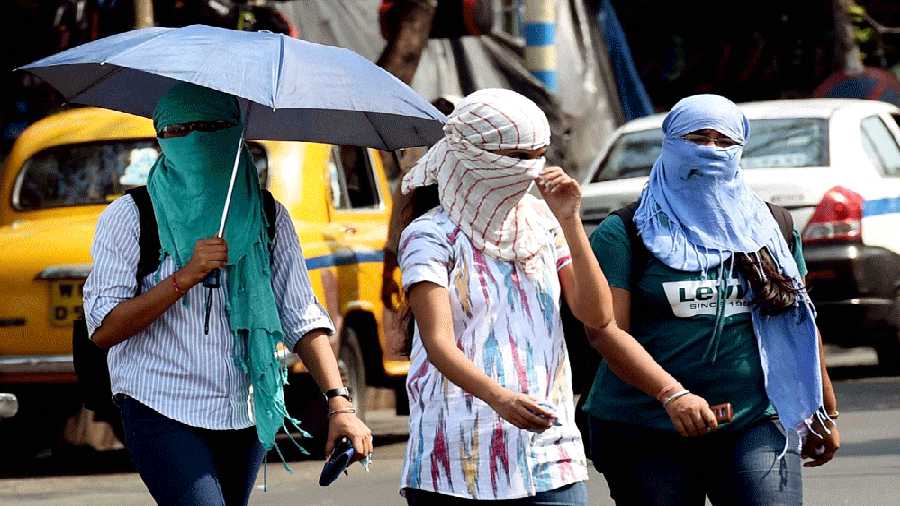It’s going to be a sizzling April. March was one of the hottest and driest on record across India and the unrelenting heat is expected to continue for at least the next two weeks.
“Starting in 1901, this was the fifth year in 123 years that the rainfall was less than 10mm in March pan-india,” says meteorologist Air Vice Marshal G. P. Sharma. India had 8.9mm of rain totally and it reached this figure only because of a thunderstorm in southern Kerala and a deep depression in the Andaman and Nicobar Islands, adds AVM Sharma.
If it hadn’t been for these two good rains, Sharma believes we might have been closer to the lowest ever rainfall in March – 6.6mm back in 1908. In 1999, India had slightly lower rainfall at 8.8mm. “I think this could have been a record low. Because of these two places (Kerala and the Andamans) we could go upto 8.9mm,” says Sharma.
This is the second year running that India has had a blazing hot March with the average temperature at 32.9 degree Celsius which is a full 3 degrees higher than the long-period average of 29.6C. “One degree itself is huge. Three degrees is a killing increase,” says Sharma who was formerly the IAF’s chief meteorologist and is now vice president, meteorology, at Skymet Weather Services.
The Indian Meteorological Department (IMD) has predicted that the heatwave conditions are likely to continue in most of northern India. It said: “Heatwave spell likely to continue over south Haryana, Delhi, Uttar Pradesh during next five days and over Gujarat, Jharkhand and Madhya Pradesh during the next three days.”
Sharma goes even further, predicting that the weather is likely to stay hot and dry for the first fortnight in April. “The entire north India starting with the mountains coming down to the plains – Punjab, Haryana, Uttar Pradesh, Gujarat, Rajasthan and Madhya Pradesh – they are going to remain dry. They will be hot also.”
The IMD predicts there may be rain in parts of eastern India including Arunachal Pradesh, Assam, Meghalaya and Sikkim in the coming days and also a storm may bring rains to the Andamans. It also says: “Isolated to scattered rainfall along with thunderstorms is likely over south peninsular India during most days of the week.”
Sharma says it’s also possible that, when the data is fully analysed, 2021 could be one of the hottest years on record.
Luckily, northern India’s farmers in states like Haryana, Punjab and western Uttar Pradesh are not affected by the rainfall shortage at this time of year. In fact, the farmers in these areas would prefer the weather remains dry until the harvest. They’d like rain before sowing the next crop. Also, Sharma says farmers in these regions get water from reservoirs, canals, rivers and also from the subsoil.
However, it’s not the same story in parts of Madhya Pradesh, Maharashtra and Gujarat which are much more rainfall dependent.
Sharma is a firm believer in climate change and global warming and says: “Global warming makes these sensitive weather events frequent and intense.” He adds: “Even cold wave conditions and prolonged cold wave conditions will also be related with global warming.”
Late last week, temperatures smashed all records in Antarctica, with temperatures up to 40C above the seasonal average not far from the South Pole. The thermometer remained nevertheless well below 0C, thankfully, as scientists say a positive temperature could have caused a dangerous ice melt, adding to rising sea levels. At the other end of the world in the Northern Arctic region, the thermometer flirted with thawing temperatures even though the region’s still in the cold season.
Sharma points out that even a 1C degree rise in sea surface temperature can have an exponential heat energy increase potential.
Fortunately, when it comes to monsoons, India appears to be better placed currently. Weather events go into cycles or patterns. In the last decade, there have been five droughts. But now, since 2019, there have been three good monsoons and there is a reasonable chance this may be repeated this year. In 2019 and 2020, the monsoons were both above normal and nearly touched excess. Says Sharma: “I don’t see any worries (for the monsoon). We think it will be normal.”











